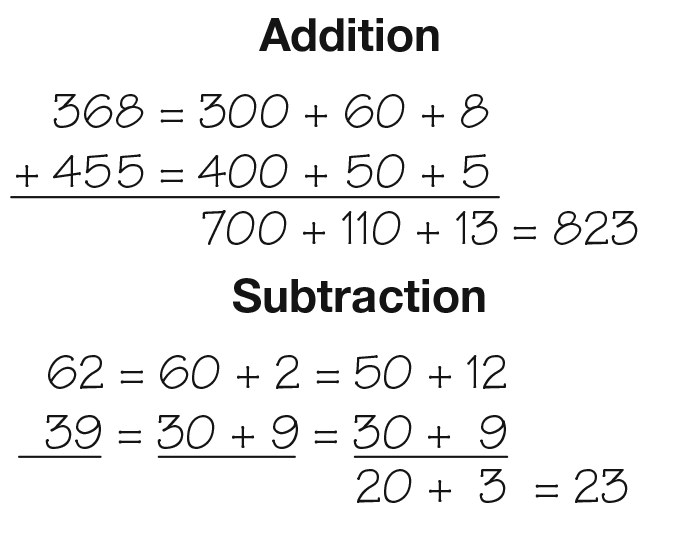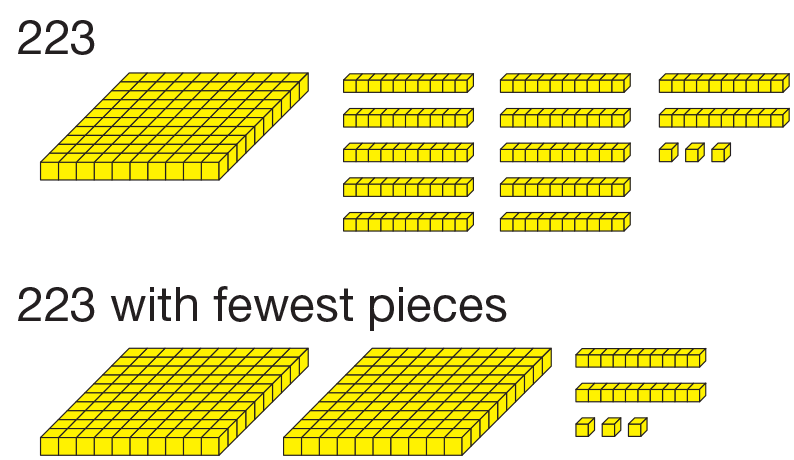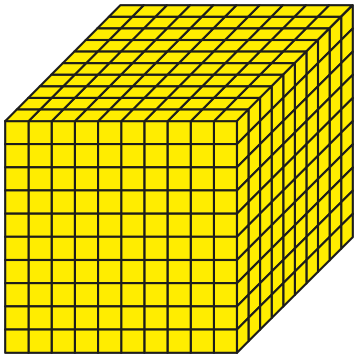Students make connections between different representations of numbers through one thousand. They apply their knowledge of place value concepts to represent and compare multidigit numbers.
Content in this Lesson
- Using and applying place value concepts to make connections among representations of multidigit numbers using base-ten pieces, number lines, expanded form, and standard form [E1].
- Composing and decomposing numbers using ones, tens, hundreds, and thousands [E2].
- Showing and recognizing different partitions of multidigit numbers using different representations (e.g., base-ten pieces, number lines, number sentences) [E3].
- Comparing and ordering multidigit numbers using base-ten pieces, number lines, and symbols (e.g., <, >, =) [E4].
Daily Practice and Problems A–D
A. Triangle Flash Cards: Group F Subtraction Facts
Assessment in this Lesson
| Assessment | Expectation Assessed |
|---|---|
|
Numbers through One Thousand with Feedback Box Student Activity Book Pages 715–717 |
|
|
DPP Item A Triangle Flash Cards: Group F Subtraction Facts Teacher Guide - digital |
|
|
DPP Item C Subtraction Facts and Families Teacher Guide - digital |
|



















